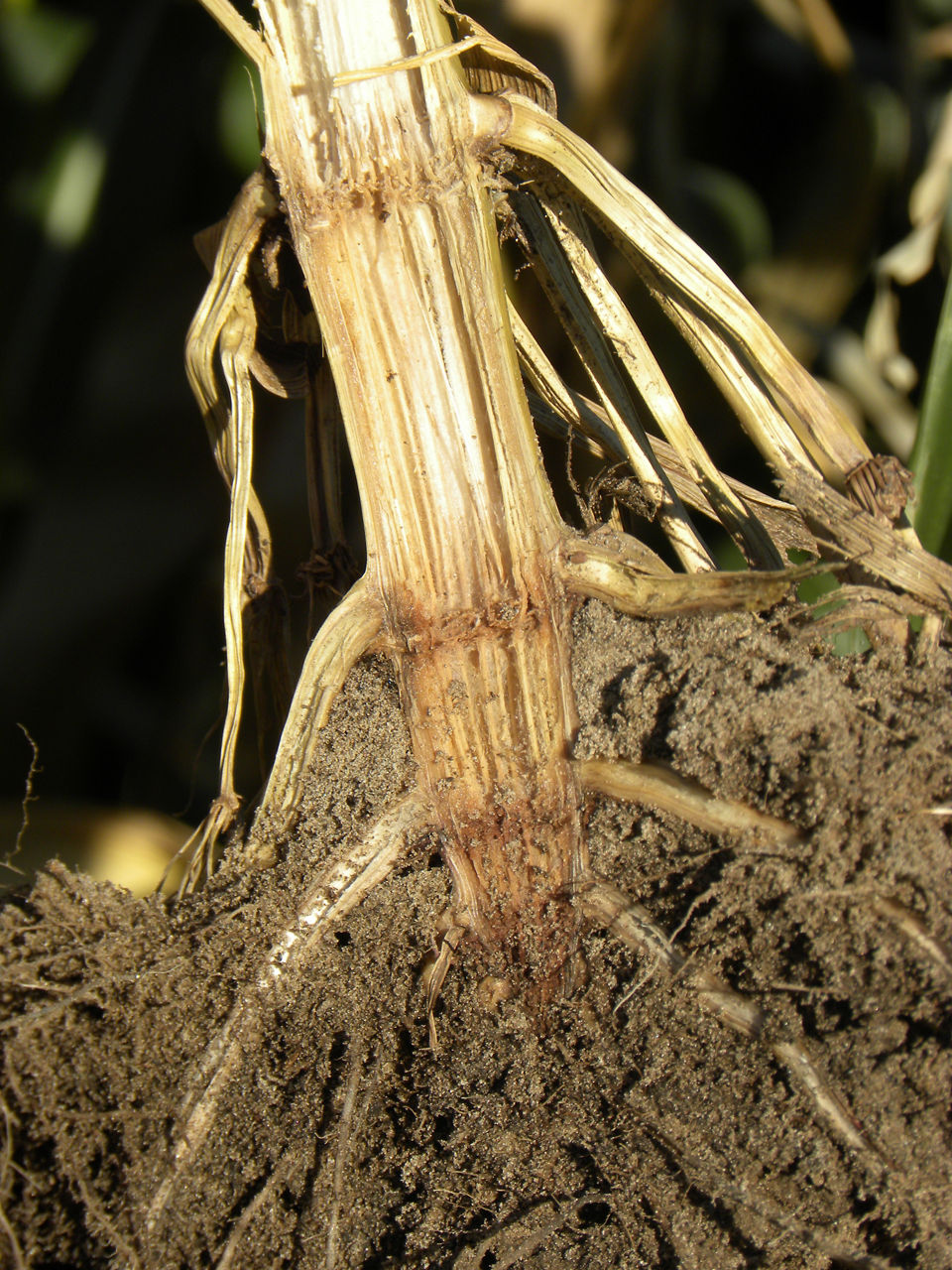Crown Rot – Identification and Management in Corn
June 16, 2025
What is Crown Rot?
Crown rot is a disease that is caused by infections that take place in the early parts of the growing season. In recent research, several Fusarium species have been linked to symptomology in the roots and stalks, but the exact Fusarium specie(s) is yet to be determined.1 This infection causes tan-to-brown discolorations, which can be hard to distinguish from healthy plants. This can cause plants to exhibit stunting, leaf discoloration, wilting and premature death.2
Environmental Conditions
Stressful growing conditions can increase the susceptibility of infection, conditions such as wet soils, cooler temperatures, compacted soils, poor fertility, and herbicide injury.2 To help protect against these conditions, improvements on drainage such as tile can be installed. While not an immediate fix, it can help to mitigate wet soils in future seasons. Preparing the seedbed through residue management helps to warm the soil more quickly which helps 1) foster quicker emergence and 2) reduce the potential for infection. Utilizing soil testing and proper fertilizer management plans for the associated crops helps allow corn the proper nutrients for healthy growth. Applying the labeled rates of herbicides at the correct timing and preventing overlap reduces the chances of herbicide injury. All these practices can help to limit the stress-inducing environment that is conducive to infection.
Identification
Crown rot is easier to identify later into the season as the disease progresses. Plants that are infected early, are often referred to as ghost plants as they die prematurely and have a gray-green appearance. Early in the season, stunting and wilting of plants with leaf yellowing can be an early indication of crown rot. Early season identification typically reveals a dark brown discoloration as well as darkening of roots.1 To identify the disease late in the season, split the corn stalk down through the roots and split the crown. Observe the root crown for tan or dark discoloration (Figure 1). If this is observed, laboratory testing can be utilized to determine the causal pathogen.

Management
With this complex disease, there is little foliar, or seed/soil applied chemistry that provides consistent protection and control. Seed-applied and in-furrow products today have not been consistent in reducing crown rot incidence or severity.1 V5 growth stage fungicide applications are not translocated to the crown as they move either within the leaf they are applied on, or through the xylem which moves the fungicide upwards, limiting the ability to reach the crown.3 Growers should focus on factors that can help reduce stress such as addressing drainage and aeration, seedbed preparation, planting later into the season in warmer soils, utilize proper fertilizer recommendations, adjust seeding rates, using seed treatments to help reduce root feeding by insects and nematodes, rotating to non-host crops, and selecting corn products that have shown tolerance or resistance to crown rot and other foliar and stalk diseases.1 For more information on this disease please read Crown Rot – A Complex Issue in Corn Production, visit with your local Channel® brand seed representatives or extension personnel.
Channel Agronomist
Dan Etter
Sources
1Robertson, A., Wise, K., and Jackson-Ziems, T.A. 2023. Frequently asked questions about crown rot in corn. Crop Protection Network. https://cropprotectionnetwork.org/publications/frequently-asked-questions-about-crown-rot-in-corn
2Munkvold, G. 2002. Crown rot symptoms common in corn. Integrated Crop Management News.Iowa State University Extension and Outreach. Iowa State University. https://dr.lib.iastate.edu/entities/publication/378a34d2-95d3-4b50-a43c-435f33a21a8a
3Robertson, A. 2023. Is a fungicide application to corn at V5 a worthwhile input? Integrated Crop Management. Iowa State University Extension and Outreach. Iowa State University. https://crops.extension.iastate.edu/blog/alison-robertson/fungicide-application-corn-v5-worthwhile-input
Other Source
Jackson-Ziems, T.A. Stalk and crown rot diseases developing in some corn. CROPWATCH. Nebraska Institute of Agriculture and Natural Resources. University of Nebraska - Lincoln https://cropwatch.unl.edu/stalk-and-crown-rot-diseases-developing-some-corn/
Web sources verified 5/2/25 1110_568318